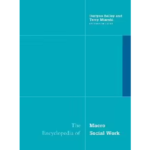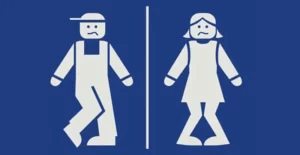Bavanisha Vythilingum,” Dan J. Stein,” and Steven Soifer?
Pararesis is characterized by the fear of not being able to urinate in public bathrooms and has been classified by some to be a sub-type of social anxiety disorder (social phobia). Despite the existence of an organization, the “Dtentional Paruresis Association(www.paruresis.org),” there is sparse literature on this condition, A survey of people, “International Paruresis Association” was undertaken using a self-report questionnaire with items that addressed demographic variables, the phenomenology of paruresis, comorbid disorders, and the impact of symptoms on quality of life. Sixty-three Patients (59 M, 4 F) completed the questionnaire. The mean age of the subjects was 38.1 + 12 years with the mean duration of symptoms being 24.5 + 13 years. Paruresis impacts significantly sufferers’ lives, with approximately one-third limiting or avoiding parties, sports events, or dating and just over half of the sample limiting the job they choose to do. social anxiety disorder(SAD) and depression are the most common comorbid disorders and the most common disorders in family members. Analysis of Liebowitz Social Anxiety Scale (LSAS)scores showed higher performance than social interaction. subscale scores across the whole sample (whether suffering from SAD or not. ) However; compared to subjects without co-morbid SAD, those with comorbidity had higher total, performance, and social interaction Scores. Thus, paruresis can be wu chronic and disabling symptom, and there seems to be an association between paruresis and other performance anxieties, Further research 10 characterizes paruresis and determines effective Treatments is needed. Depression and Anxiety 16:84-87, 2002. © 2902 Wiley-Liss, Inc.
Keywords: paruresis; social anxiety disorder; comorbid,
INTRODUCTION
Paruresis, or “shy bladder syndrome,” is characterized by fear of not being able to urinate in public bathrooms or in situations in which others may be aware that the subject is urinating. There have been few empirical studies of paruresis; those that have been done suggest that it may be far more common than assumed. Paruresis appears more in males, and it may be associated with significant comorbid psychopathology [Soifer et al., 2001; Himle, 1997, Zgourides, 1987, Malouf, 1985]. Anecdotal reports suggest the efficacy of cognitive-behavioral techniques but not of phenelzine [Hatterer et al, 1990]. However, other medications such as SSRIs may be helpful as an adjunct to therapy [Soifer et al, 2001].
Some authors have suggested that paruresis is a subtype of social anxiety disorder (social phobia) [Soifer et al, 2001; Kessler et al., 1998]. Certainly, urinating in front of others can be conceptualized as an anxiety-evoking performance situation, Thus, the Liebowitz Social Anxiety Scale (LSAS) [Liebowitz, 1987], a scale commonly used in social anxiety disorder research includes an item to assess fear and avoidance of urinating in front of others.
- MRC Unit on Anxiety Disorders, University of Stellenbosch, Tygerberg, Cape Town, South Africa
- School of Social Work, University of Maryland, Baltimore, Maryland
*Correspondence to: Bavanisha Vythilingum, MRC Unit on Anxiety Disorders, University of Slellenbosch, P.O. Box 19063, TYGER BERG 7505, Cape Town, South Africa, E-mail; bv@gerga.sun.ac.za
Received for publication 2 May 2002; Accepted 29 May 2002
© 2002 WILEY-LISS, INC.
Page 1
| Brief Report: Pururesis Survey |
The potential clinical importance of paruresis is reinforced by the existence of the “International Paruresis Association,” founded in 1996 by Professor Steven Soifer and therapist Carl Robbins, The Association has conducted weekend workshops for people with paruresis in order to promote awareness of the condition and encouraged appropriate treatment. In this paper, we report the results of a survey of people affiliated with the TPA.
METHODS
People affiliated with the IPA were surveyed with a self-report questionnaire, The questionnaire included items addressing demographic variables, the phenomenology of paruresis, and comorbid diagnoses, Items from the Liebowitz Social Anxiety Scale (ISAS) were included. Distribution of the questionnaire was done over the Internet, After 2 reminders, 63 questionnaires were received, which was equivalent to a response rate of 10%.
RESULTS
SUBJECTS
The mean age of subjects was 38.1 + 12 years. Symptoms were chronic, with a mean onset of 13,2 +4.9 years, and a mean duration of 24.5+13 years.
SYMPTOMS
Consistent with earlier literature, we found that most sufferers experienced difficulty urinating in situations where others were present. The most difficult situations for people were urinating in I) a public restroom where there was a line of 84.1%), 2) a busy public restroom (58.7%), and 3) a quiet public restroom (39.7%). Most subjects (68.7%) did not have problem urinating at a friend’s home, A minority of subjects (15%) indicated that even urinating at home could be
problematic.
In anxiety-provoking situations, subjects experienced many symptoms of panic attacks, including trembling (44.4%), sweating (38.0%), shortness of breath (34.9%), blushing (34.9%), and nausea (17.5%).
Our data shows that contamination concerns are not significant for most sufferers, with only about 6% reporting fears about the cleanliness of bathrooms, However, current comorbid disorders were common among subjects, the most common being social anxiety disorder (social phobia) 28.6%, major depressive episode (MDE) 22.2%, alcohol dependence 7.9%, alcohol abuse 14.3%, and obsessive-compulsive disorder (OCD) 4,8%. Nineteen (19) percent of subjects had a history of a past MDE, In total 49.2% of all subjects surveyed had at least one comorbid diagnosis.
Parvresis appears to be unrelated to medical problems in the majority of patients, However, in 9% of the patients, medical problems, particularly prostatism, were mentioned as a contributing factor to their symptoms.
Almost sixteen percent of subjects reported a family history of paruresis. Other psychiatric conditions were also common in the subjects’ families, most notably social anxiety disorder (15.9%) and depression BL7%). Only 1.6% of subjects had a family history of OCD.
CONSEQUENCES
Paruresis was reported to have a significant impact on sufferers’ lives, Self-report indicated that 15.9% limit/avoid fluids, 38.1% limit or avoid traveling, 25.4% limit or avoid Sports events or parties, 36.5% limit or avoid invitations, and 33.5% limit or avoid dating.
Symptoms have also had adverse implications for occupational choice in 30.2% of the respondents, paruresis had an impact on their chances of promotion, in 55.6% it Limited the type of job they chose to do, and 50.8% had turned down jobs because of their paresis.
Paruresis is also associated with significant feelings of shame; 27.0% were moderately land 39.7% were markedly embarrassed by their paruresis, A significant number of sufferers hid their symptoms, with 25.4% not telling their partners, 44.4% not telling their family, and 58.7% hiding their disorder from friends.
Paruresis also has medical implications. For over half of our sample (57.1%), it is impossible to produce a urine specimen on demand, Of these respondents the majority (91.7%) have found this to be a problem. Furthermore, 9.5% of the sample reported bladder or kidney problems secondary to paruresis.
Unfortunately, there was also a significant lag of 13.8+11 years until the diagnosis of symptoms, with a mean age at that time of 27.2 +11 years. In most cases (58.5%), this was a self-diagnosis, with fewer subjects (37.7%) reporting being diagnosed by a health professional, Indeed, most patients (51.8%) had never had their symptoms medically evaluated.
RELATIONSHIP TO SOCIAL ANXIETY DISORDER
We subdivided our sample into 2 groups: those with paruresis who self-rated positive on the Mini International Neuropsychiatric Interview for DSM IV (MINT) [Sheehan et a), 1998) module for social anxiety disorder (SAD group) and those who had paruresis only (PO group). We then examined the differences in scores between the two groups on the Liebowitz Social Anxiety Scale (LSAS). The SAD group had 18 subjects and the PO group 45, No significant differences in age or gender were found between the two groups.
The SAD group had significantly higher scores on both performance and social interaction subscales of the LSAS (Table 1 as well as a significantly higher total L5AS score. When the individual items of the LSAS were compared, no difference between the groups was
Page 2
| Vythilingum et al. |
found on item 13 (urinating in a public bathroom). For the remaining items, the SAD group scored significantly higher on most items, except items 3 (eating in public places), 4 (drinking in public places), 6 (acting performing or giving a talk in front of an audience, 8 (working while being observed), 21 (trying to pick up someone), 22 (returning goods to a store), 23 (giving a party), and 24 (resisting a high-pressure salesman) (Table 1).
We also compared the mean score on the performance subscale of the LSAS to the social interaction subscale in the SAD subgroup, the PO subgroup, and the sample as a whole, For each group the mean scores on the performance subscale were significantly higher than the mean scores on the social interaction subscale (Table 2).
TREATMENT
Treatments used for paruresis included medication (42.9%), behavior therapy (42.9%), other forms of psychotherapy (44.4%), and other forms of psychotherapy (44.4%). In 28.6% of the subjects, the course of the disorder had remained stable; it had improved in 27.0%, and worsened in 7.9%, and has remained intermittent in 36.5%. We did not systematically attempt to assess the value of different treatments.
CONCLUSIONS
The main findings of this study were 1) that paruresis (which appears more commonly in men) is a chronic and disabling symptom, 2) that social anxiety disorder and depression are the most comorbid disorders and the most common disorders in family members, and 3) that there seems to be an association between paruresis and other performance anxieties.
These findings are consistent with previous work (Soifer et al, 2001; Himle, 1997; Zgourides, 1987; Malouf, 1985), which has indicated that paruresis can be problematic for many and that it may be associated with significant comorbid psychopathology. In addition, there is a significant lag time between symptom onset and a diagnosis of paruresis. We find it to be of particular concern that only a third of the sample have had their symptoms recognized by a healthcare professional. As a consequence, it is important to increase awareness of paruresis among healthcare professionals as well as the lay public. Increased recognition with consequent earlier onset of treatment would help alleviate the morbidity associated with paruresis.
Given the high incidence of comorbid disorders with pararesis, particularly social anxiety disorder and depression, it is important to rigorously evaluate all patients that present with paruresis for comorbid disorders and to treat both, Conversely, it would be worthwhile to specifically ask patients that present with symptoms of social anxiety disorder if they also have paruresis.
Arguably there is sufficient data for a heuristic strategy of conceptualizing paruresis as performance anxiety. Our data shows that patients with paruresis, whether or not they have a social anxiety disorder, score
TABLE 1. Mean scores on the LSAS: differences between SAD and PO group
| SAD group (n=:18) mean | PO group (n=45) mean | t | p | |
| Total score | 96.06 | 69.71 | 3.83 | <.001 |
| Performance subscale | 51.78 | 39.44 | 3.27 | <.003 |
| Social interaction subscale | 44.67 | 30.47 | 3.76 | <.001 |
| Items 3 (eating in public places) | 2.04 | 2.44 | 1.61 | ns |
| 4 (drinking in public places) | 2.61 | 2.11 | 1.17 | ns |
| 6 (acting, performing, or giving a talk in front of an audience) | 4.89 | 3.96 | 1.84 | ns |
| 8 (working while being observed) | 3.44 | 2.67 | 1.86 | ns |
| 21 (trying to pick up someone) | 4.89 | 3.47 | 2.00 | ns |
| 22 (returning goods to a store) | 3.39 | 2.56 | 1.82 | ns |
| 23 (giving a party) | 4.17 | 3.35 | 1.19 | ns |
| 24 (resisting a high-pressure salesman) | 3.17 | 2.60 | 1.15 | ns |
ns=not significant.
TABLE 2. Performance subscale vs, social interaction subscale scores on the LSAS
| Performance subscale mean score | subscale Social interaction subscale mean score | t | p | |
| Total sample ((N=63) | 42.97 | 34.52 | 8.753 | <0.001 |
| PO group (N=45) | 39.44 | 30.47 | 9.698 | <0.001 |
| SAD group (N=18) | 51.78 | 44.67 | 2.858 | 0.011 |
Page 3
| Brief Report: Purusesis Survey |
significantly higher on the performance subscale of the LSAS than on the social interaction subscale. Of further interest is that many patients experienced blushing, 2 symptoms typically associated with the panic attacks of social anxiety disorder rather than with those of panic disorder, Furthermore, many patients have individual and family histories of other social anxiety symptoms. Finally, cognitive-behavioral techniques used for the treatment of public-speaking fears appear useful for people with paruresis [Soifer et al., 2001; Himle, 1997].
The reliability of our data is limited by the small sample size and low response rate, as well as the self-report format of the survey. However, the data reinforce the importance of paruresis as a form of social anxiety and underline the high morbidity and comorbidity associated with these symptoms, Additional empirical data would be helpful to determine its formal relationship to SAD, Also, additional work to develop and test ‘treatments for paruresis is necessary.
Acknowledgments
Dr. B. Vythilingum and DJ. Stein is supported by the Medical Research Council (MRC) of South Africa.
REFERENCES
Hatteter JA, Gorman JM, Fyer AJ, Campeas R, Scheiener FR,Hollander E, Papp LA, Licbowitz MR. 1990. Clinical and research
reports: pharmacotherapy for four men with paruresis. Am J Psychiaury 147:109-111.
Himle J. 1997. Behavioral treatment of bashful bladder syndrome. Presentation at the Anxiety Disorders Association of America conference, New Orleans, LA.
Kessler RC, Stein MB, Berglund P. 1998. Social phobia subtypes in the National Comorbidity Survey. Am J Psychiatry. 155:613-619.
Liebowitz MR. 1987. Social phobia. Mod Problems Pharmacopsy-chemistry 22:41-73.
Sheehan DV, Lecrubier Y, Sheehan KH, Amorim B, Janavs J, Weiller E, Hergueta T, Baker R, Dunbar GC. 1998. The Mini-International Neuropsychiatric Interview (M.LN.L): the development and validation of a structured diagnostic psychiatric interview for DSM-IV and ICD-10. J Clin Psychiatry $9:22-33.
Suifer S, Zgourides GD, Himle J, Pickering NL. 2001. Shy Bladder Syndrome: your Step-by-Step Guide to Overcoming Paruresis, Oakland, CA: New Harbinger Publication, Inc. p 6-18.
Zgourides G. 1991. Atenolol treatment of paruresis. Psychol Rep 68:766.
Zgovrides GD, Warren R. 1990, Propanalol treatment of paruresis (psychogenic urinary retention): a brief case report, Percept Mot Skills 7:885-886.
Zgourides GD. 1987. Paruresis: overview and implications for treamment. Psychol. Rep. 60:1172.










As someone who has struggled with both social anxiety and paruresis, I can definitely see how they can be related. The fear of judgment and embarrassment in social situations definitely plays a role in both conditions. It’s important for researchers to delve deeper into this connection to provide better support for those dealing with these issues
This survey resonates with me on a personal level. I’ve often felt like my paruresis was just another manifestation of my social anxiety. The fear of scrutiny and negative evaluation makes it incredibly challenging to use public restrooms. I hope this study sparks more conversation and research into effective interventions for people dealing with these interconnected issues.
It’s refreshing to see research acknowledging the overlap between paruresis and social anxiety disorder. For so long, those of us with shy bladder syndrome have felt isolated in our struggles. Understanding the underlying psychological factors can pave the way for better understanding and support from both the medical community and society at large.